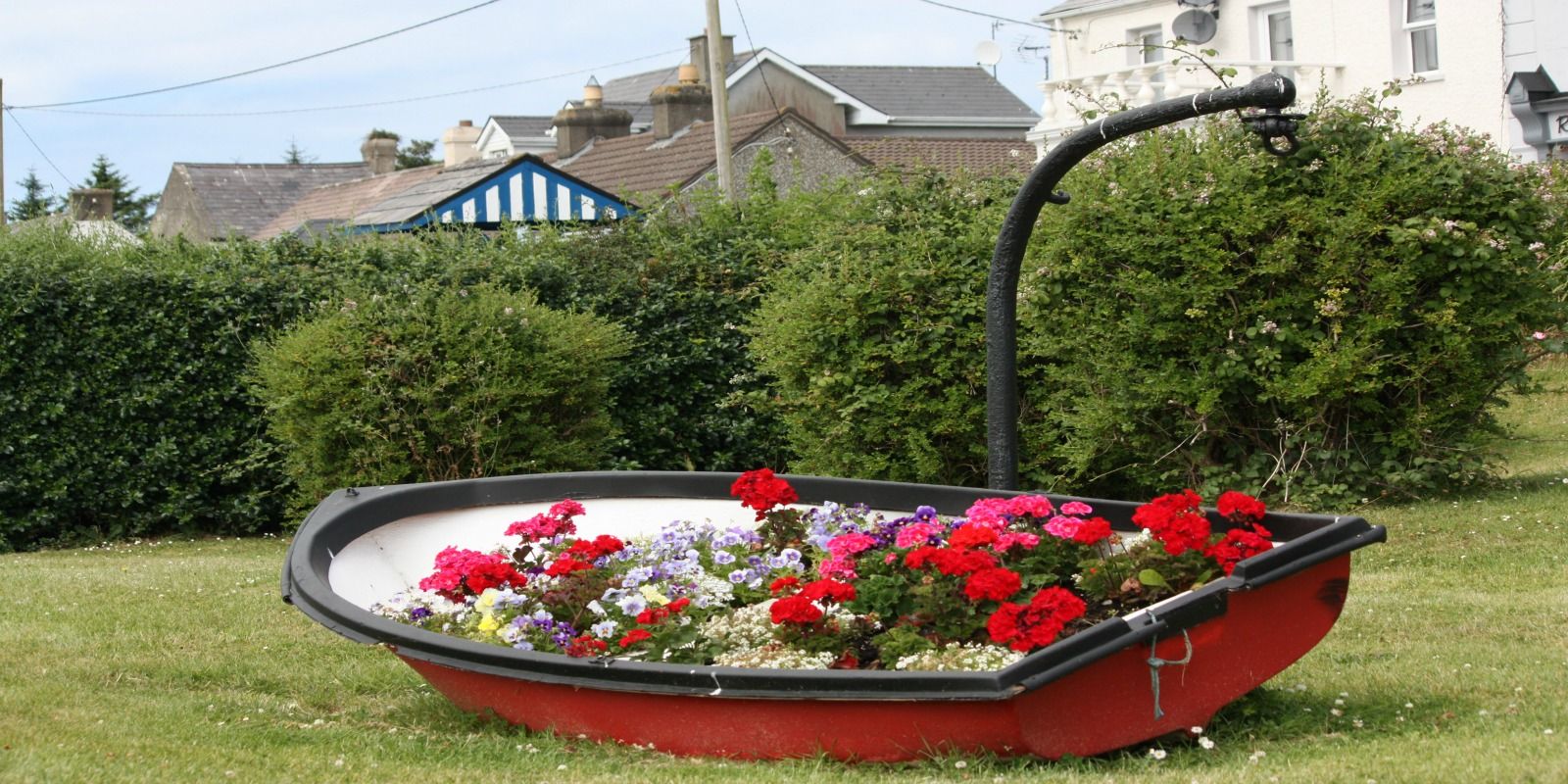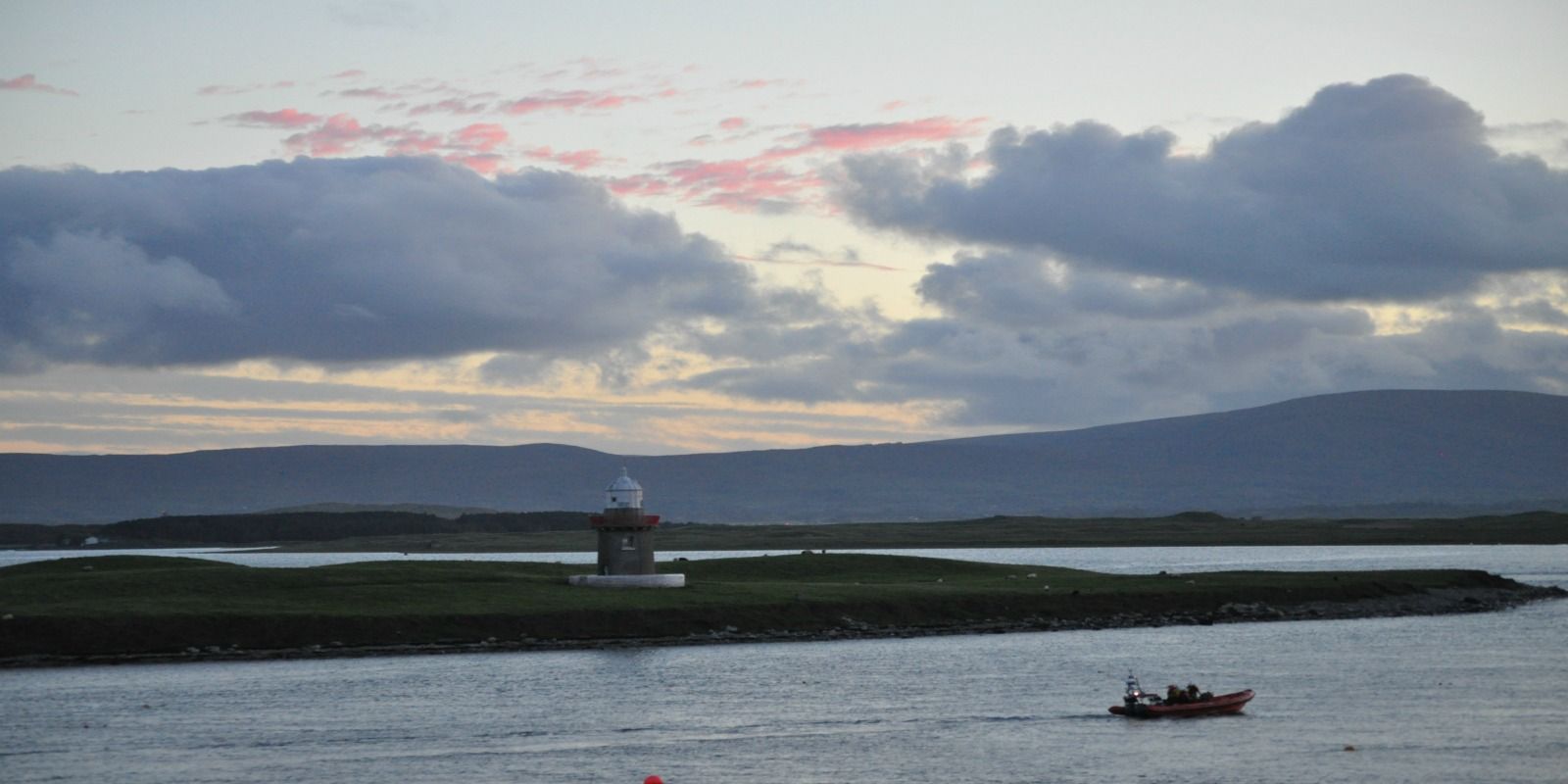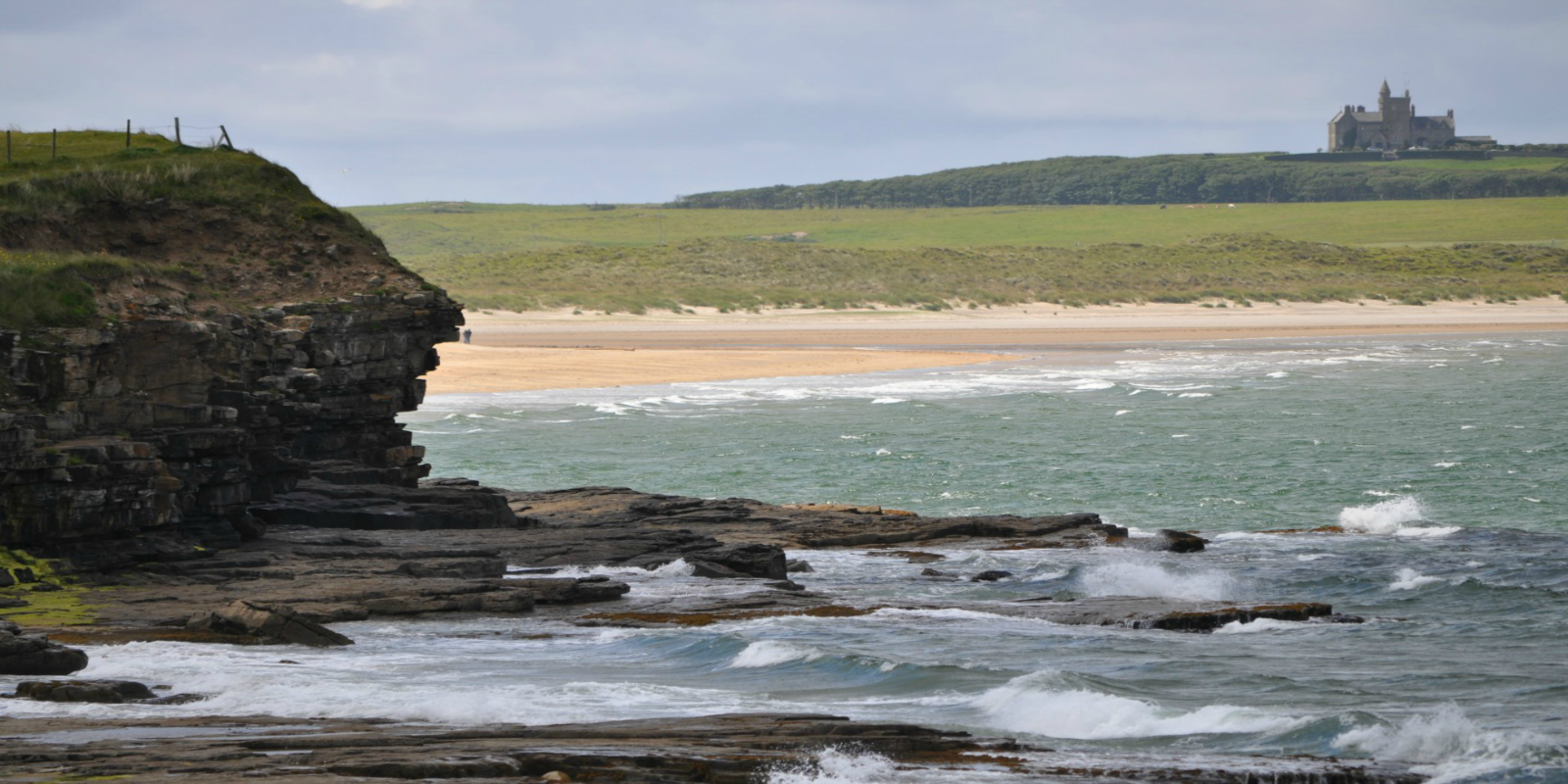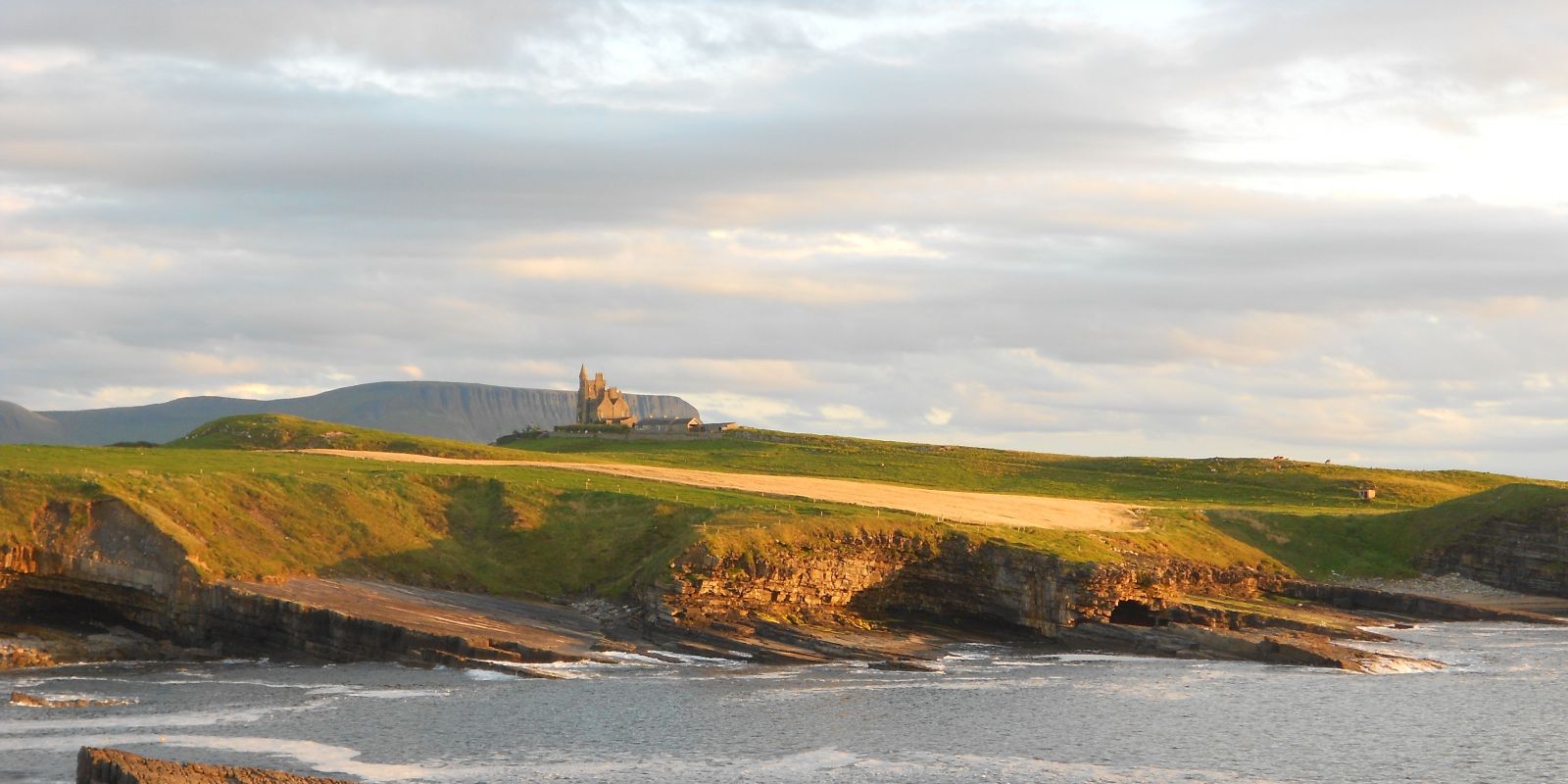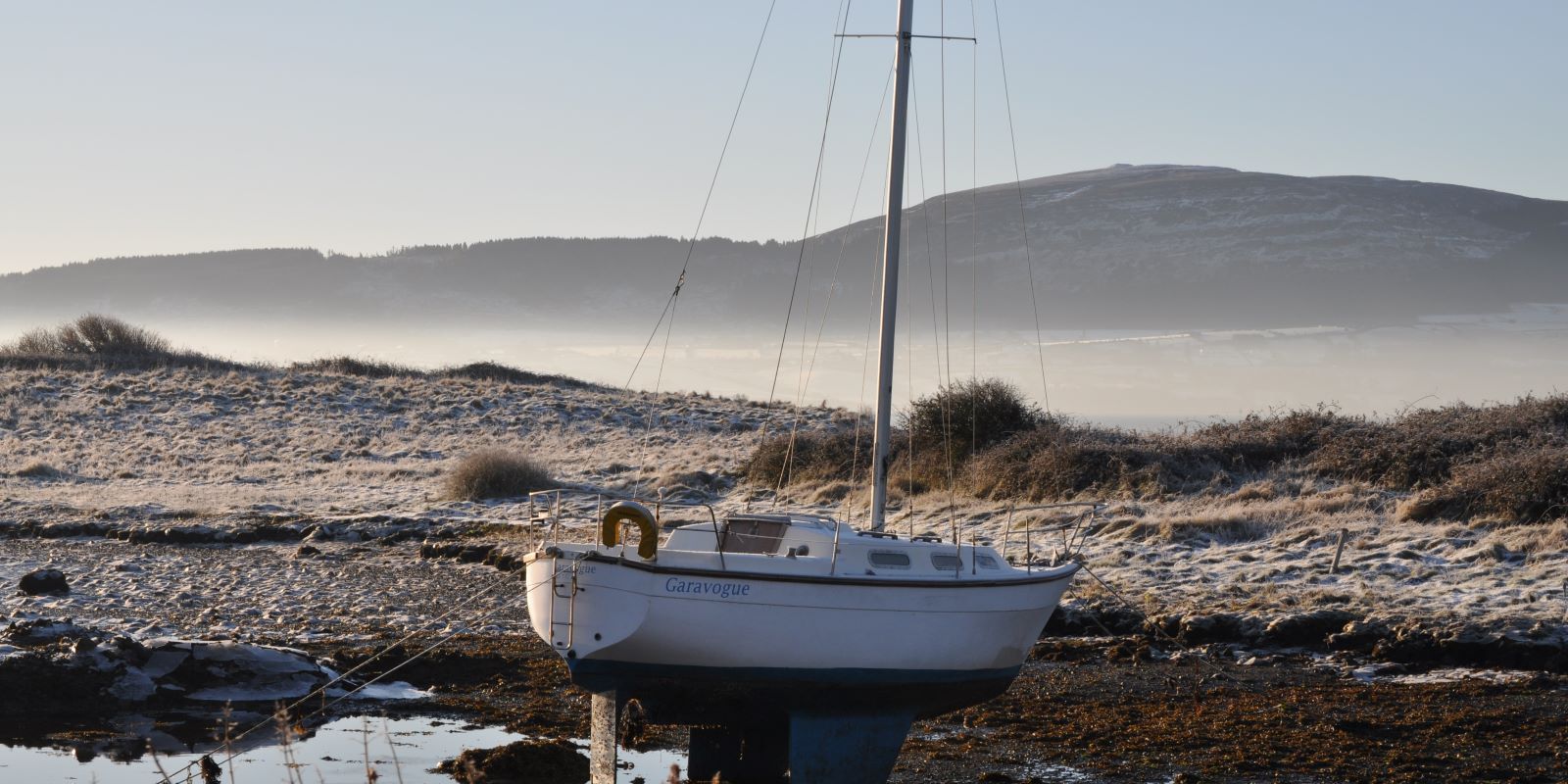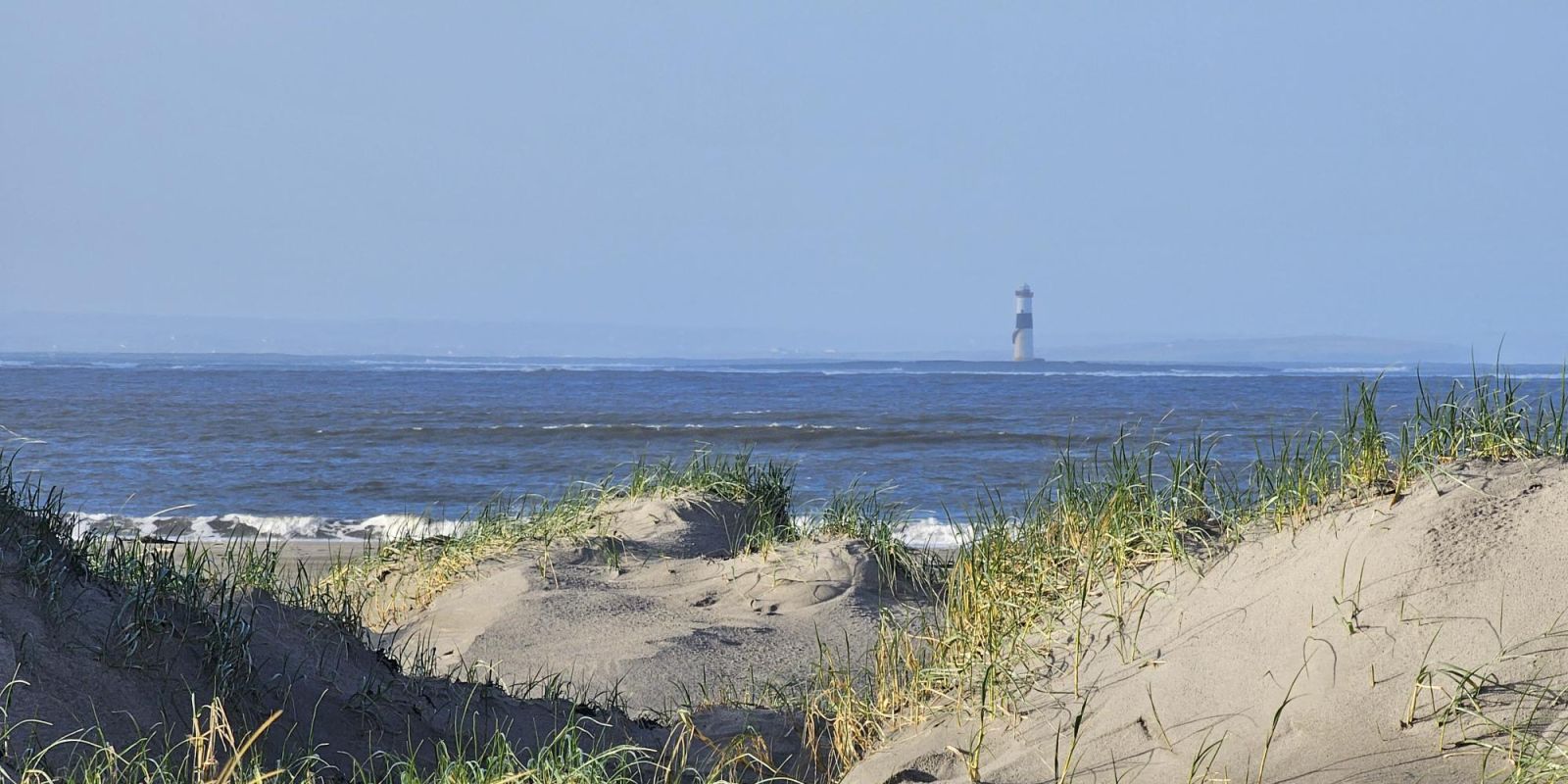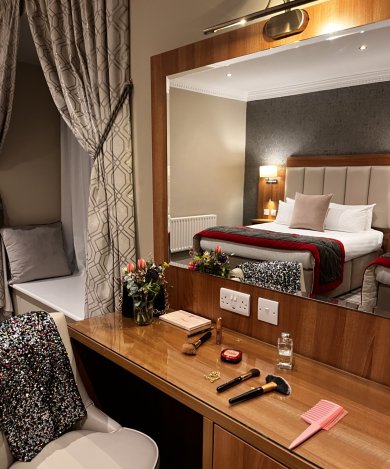Explore Sligo by Car
Strandhill - Cooolera Peninsula
Head west leaving the hotel, on the R292, the views to your right are breathtaking – overlooking Sligo Bay with both Coney and Oyster Island, access to Coney Island can be achieved via Cummeen Strand (turn off sign posted 4.2 km from Sligo Town) when the tide is out, you need to be careful however that you have got the right tide times as many a car has got caught. Access is exposed at low tide and is marked by 14 stone pillars over a 5km distance – worth to effort to enjoy unspoilt peaceful island with its amazing beaches
Continuing on the R292, opposite the garage is entrance to Queen Maeves Trial – Knocknarea. A strenuous walk will bring you to the summit of Knocknarea where you will find Queen Maeves Tomb, overlooking Carrowmore megalithic cemetery on the summit of Knocknarea Mountain is the huge flat-topped cairn. There are spectacular views from here and the cairn is visible for miles around.
Continuing onto Strandhill, you come to a roundabout 7.3 km from hotel, going straight on, you will come to the village of Strandhill renowned for its surf, and explore Killasbugbrone church, where St Patrick lost a tooth which is now housed in the National Museum of Ireland
Leaving Strandhill Head east on Burmah Rd/R277 toward Radharc na Mara, At the roundabout, take the 2nd exit onto R292 for 1.5km, keep an eye out for a turn right down a small road, this will lead you to Cullenamore Beach – safe for swimming when the tide is in and overlooked by Knocknarea, long stretch of beach overlooking Ballisadare bay, Culleenamore is a known natural oyster bed that produces fine oysters
Now its time to explore some more history, leaving Culleenamore turn right onto the R292 for 4.9km at the roundabout continue straight, Carrowmore Megalithic Cemetery, will be on your right. This is the largest megalithic cemetery in Ireland and amongst the oldest and most important in Europe. It covers an area of about 0.5 km2 in the shadow of Knocknarea to the west. Listoghil tomb is aligned to the Samhain (October 31st) and is believed to be one of the most important tombs at Carrowmore
Back to base. Leaving the Cemetery head north east turning right onto Woodville Road, this will lead you onto a major intersection where you turn left down by Curley Park. At the next intersection turn right again and travel in the Strandhill road where the hotel will be on your left
If you have time before you visit Carrowmore Megalithic Tombs another fantastic and mesmerising natural phenomena is the Glen, leaving Cullenamore turning right – travel for 1.5km and take a turn left in about 650 m you will come to the entrance of this amazing place from a bygone world. The Fairy Glen, this cleft in the mountain runs for about 1.2 km, a place where the ‘little folk’ live
Sligo - A Tour of Yeats Country
Sligo is a county of extraordinary beauty and vivid contrast in its lakes and forests, mountains and rivers. It is a county that has so much more to offer than could ever be captured by pen or canvas. We begin our tour from Sligo town, situated at the mouth of the Garavogue river and surrounded by mountains - Benbulben and Truskmore to the north; the Ox Mountains to the east and Knocknarea to the south. Leave Sligo on the Dublin road forking to the left approx 1 km past the courthouse and garda barracks (signposted Tobernalt). Shortly we catch our first glimpse of beautiful Lough Gill and the Garavogue River. We also see part of Hazelwood estate. Hazelwood House is one of the largest Georgian houses in the county and the estate can be entered from the northern shore of Lough Gill. Approx 200m further on we find the entrance to the car park of Cairns Hill Forest Walk. Two hills here, Belvoir and Cairns are crowned by two stone cairns of the passage tomb types.
Continuing on our route we take a short detour at the next right hand turn to the 'Holy Well', signposted "Tobernalt". This was an important ancient Celtic assembly site of Lughnasa festivities in honour of the Celtic god Lug who gave his name to the Irish form of the month of August. Returning to the lake road and turning right we soon note Dooney Forest Walk and nature trail. Walking along the lake shore and up a steep climb we get some magnificent views of Lough Gill and the mountains surrounding it. Short detours can be made off the main Dromahair road to Cashelore stone fort and to the lake shore to get a close view of the lake isle of 'Innisfree', immortalised in the poem by W B Yeats. On arrival at Dromahair we note that we are now in Co. Leitrim. Dromahair is a pretty village resting in wooded surroundings on the banks of the Bonet River.
Also to visit at Dromahair is Creevelea Abbey founded in 1508 and situated on the left bank of the Bonet River. We continue along the eastern shore of the lake and head through the picturesque and wild countryside of north Leitrim to Manorhamilton, a modest rural town. From Manorhamilton, a we make our way towards Kinlough through the Valley of Glenade, famous for its rare scenic beauty, this wild and rugged district has captivated many a traveller. Here we are in sheep country'. Shortly after Kinlough, which is a major angling centre, we reach Tullyhan, Leitrim's only seaside resort lying on the coast overlooking the broad Atlantic where the three counties of Donegal, Leitrim and Sligo meet. We turn towards Sligo and approx 50m before Creevykeel crossroads, we note the signpost and entrance to Creevykel court tomb. This is the finest example of a classic court tomb, with full court, in Ireland. The tomb built between 3,000 and 3,500 BC. From Creevykeel cross-roads we take a detour toMullaghmore where we find a fabulous sandy beach running for 3km. In the background towering above the beach and village is majestic "Classiebawn" Castle, former home of the last viceroy of India, the Earl of Mountbatten.
Lying off Mullahgmore is the island of Inishmurray, uninhabited since 1947. It is the most southern breeding ground of the Elder Duck. Returning to the N15 we travel to Cliffoney and then to Grange. Shortly after which we leave the main road yet again to visit Lissadell. Lissadell House was once the home of the Gore-Booth's. Ancestors include Sir Henry Gore-Booth (1843-1900), the artic explorer, and Constance Gore-Booth (1884-1927), a leader in the 1916 uprising and sentenced to death by the British. W.B.Yeats stayed here and referred to Lissadell many times in his writings. Lissadell is open to the public in summer and its estate is now a forestry and Wildlife bird reserve. Rejoining the main N15 at Drumcliff, we pause at this picturesque village nestling beneath Benbulben and it is here in a lonely churchyard we find the tomb of the great W B Yeats (1865-1939). Poet, patriot and Nobel Prize Winner, we recognise his tomb by the now famous epitaph of his own composition - "Cast a cold eye on life, on death, horseman pass by". Whilst in Drumcliffe, (which was an important Christian monastic site founded by St Colmcille in AD 575), we visit the round tower and see the 10th century high cross, the only one known to occur in Co. Sligo. We return to Sligo via Rosses Point, a favourite seaside resort with two magnificent sandy beaches, situated 8km from Sligo. Total Distance: 76 miles. Public Transport: Daily services between Sligo/Manorhamilton. Tullaglan/Sligo.


